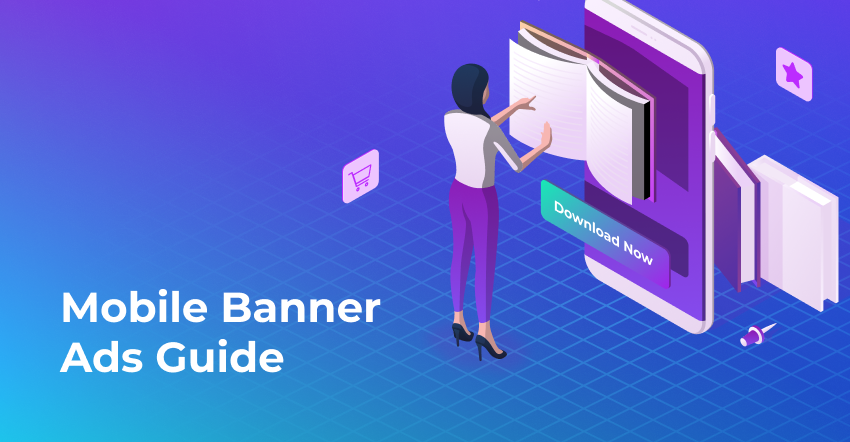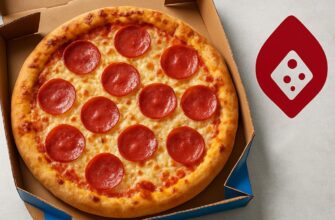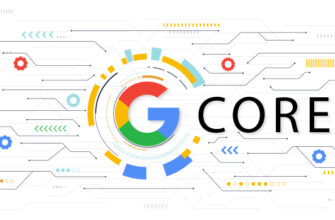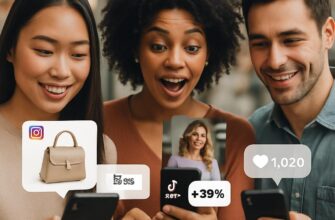Banner advertising has long been a part of everyday website and app browsing. Many of us click on bright images to learn about discounts or new products. But what exactly makes this tool useful for businesses? In this article, we’ll break down how banner advertising works, its varieties, provide real examples, and weigh the strengths and weaknesses. This will help you decide if it’s worth using for promoting your project or simply navigate online ads better as a consumer.
- What Banner Advertising on the Internet Entails
- Main Types of Banner Advertising
- Static Banners
- Animated and Interactive Banners
- Video and Rich-Media Banners
- Examples of Successful Banner Advertising
- Advantages of Using Banners
- Disadvantages of Banner Advertising
- How to Improve Banner Advertising Effectiveness
What Banner Advertising on the Internet Entails
Banner advertising is a graphic block on a web page that includes an image, text, and a link to the advertiser’s site. When a user clicks on it, they are redirected to the relevant page where they can purchase a product or get more details. Such banners are placed on popular sites, in search engines, or social networks through platforms like Google Ads or similar services.
This type of advertising emerged in the 1990s as the internet was developing. The first banner was shown in 1994 on the HotWired site — it was a simple image with the text “Have you ever clicked your mouse right HERE?” and an arrow. Since then, technology has advanced: now banners can be animated, with video, or even interactive elements where users can engage directly in the ad.
The main goal is to attract attention and drive traffic. Advertisers pay for impressions (CPM — cost per thousand views) or clicks (CPC — cost per click). For example, if a banner is seen by 10,000 people and clicked by 100, the CTR (click-through rate) would be 1%. This is a basic measure of effectiveness.
Banners are integrated into the site’s design so they don’t annoy users but still stand out. They help brands stay visible, especially when people are searching for information or just browsing content. For small businesses, this is a way to compete with larger companies without massive budgets.

Main Types of Banner Advertising
Banners vary by format, purpose, and display method. The choice depends on what you’re promoting — a brand, product, or promotion. Let’s look at the key types.
Static Banners
These are the simplest — non-moving images in JPEG or PNG format. They contain a product photo, logo, and short text. Standard sizes include 728×90 (leaderboard for the top of the page), 300×250 (medium rectangle), or 160×600 (skyscraper for the sidebar).
Static banners are suitable for beginners because they’re easy to create in tools like Canva or Photoshop. They’re cheap to produce and load quickly, which is important for mobile devices. The downside is they’re less noticeable than dynamic options.
Animated and Interactive Banners
Animated ones use GIF or HTML5 for motion. For instance, text appears gradually or the image changes. This boosts engagement: studies show animation can increase CTR by 20-30% compared to static ones.
Interactive banners let users interact — hover the mouse to see details or click elements within the banner. Example: a banner with a quiz where you select an option and see the result immediately. These are used for games or surveys to hold attention.
Video and Rich-Media Banners
Video banners are short clips up to 15-30 seconds that play automatically or on click. They’re effective for showing a product in action, like in gadget ads.
Rich-media is an advanced format with audio, sliders, or 360-degree views. For example, a banner where you rotate the product with your mouse. This is expensive but yields high response: statistics indicate rich-media can boost conversion by 50% in some campaigns.
By purpose, banners are divided into branding (for recognition), image-building (for reputation), and sales-oriented (for direct sales). There are also pop-ups (floating windows), pop-unders (opening beneath the main page), and lightboxes (dimming the screen to focus on the ad).
Examples of Successful Banner Advertising
To understand how banners work in practice, let’s examine real cases. They demonstrate that creativity and targeting make a big difference.
One classic example is the Pringles campaign with the endless “Can Hands” banner. It simulated hands grabbing chips from a can, repeating the action. Result: high engagement, people shared it on social media, and the brand became associated with fun.
Audi used an interactive banner for the A8 model. Users could “drive” the car on a virtual road, changing speed or turns. This not only drew attention but also gave a test-drive feel, increasing purchase interest.
Volkswagen’s campaign for the Polo featured a banner with a puzzle: assemble parts of the car. It took time, but people remembered the brand. CTR rose by 40%.
In Europe, a good example is Tesco. This company often orders online advertising, including banners for seasonal promotions. For instance, in a mango campaign, they used vibrant static banners with fruit photos and discounts on food-related sites. The banners led to a landing page with recipes, boosting store traffic. Tesco combines banners with outdoor ads, but online formats help reach audiences in various regions.
Nutrisystem applied banners for diets: “before and after” photos with text like “Minus 10 kg in a month.” This motivated clicks, especially among women aged 30-50. Subscription conversion grew by 25%.
Heineken’s beer banner showed a bottle “pouring” beer on hover. Simple animation, but memorable, especially for bar audiences.
Nike used video banners with runners in sneakers. They appeared on sports sites, targeted by interests. Result: 15% sales increase for the model.
These examples highlight: a banner must be relevant to the site’s context and user interests. Without that, even a beautiful design won’t work.
Advantages of Using Banners
Banner advertising remains popular due to several strong points.
First, broad reach. Banners show to millions of users across platforms. For example, in ad networks, coverage exceeds 90 million people monthly. This allows targeting the right audience without high costs.
Second, visual appeal. Images are processed by the brain faster than text, so a banner can convey an idea in seconds. This is useful for brands with vivid products, like clothing or food.
Third advantage — precise targeting. Platforms analyze behavior: age, gender, interests, location. You can show banners only to those searching for similar items, reducing waste on non-target views.
Another plus — quick returns. Launch a campaign in a day, and traffic starts immediately. Ideal for seasonal promotions: announce a discount, and sales rise.
Finally, low cost compared to TV or outdoor ads. CPM starts from a few euros, and for small businesses, there are free banner creation tools. Plus, easy to measure results: clicks, conversions, ROI (return on investment).
Disadvantages of Banner Advertising
Despite the pros, there are cons to consider.
The main one — banner blindness. Users are accustomed to ignoring ads: statistics show 86% don’t notice banners on pages. This reduces effectiveness.
Second drawback — non-targeted clicks. On mobiles, people click accidentally, wasting budget. Plus, kids or bots may click without interest.
Third — ad blockers. Programs like AdBlock are used by 40% of users, so banners simply don’t display.
High competition is another issue. On popular sites, many ads compete, and yours can get lost. Average CTR is 0.1-0.5%, meaning 1-5 clicks per 1,000 views.
Creating a quality banner requires a designer, and poor design repels. Plus, in some niches (like finance), strict moderation rules apply.
Finally, unpredictability. Effectiveness depends on the platform: higher CTR on news sites than entertainment ones.
How to Improve Banner Advertising Effectiveness
To make banners beneficial, follow simple rules.
First, define the goal: branding or sales. For branding — bright images; for sales — clear call to action like “Buy with discount.”
Create the design: use contrasting colors, large font, minimal text (5-7 words). Add urgency — “Today only!”
Test: run A/B tests with different versions. Change text, colors, see what gets more clicks.
Choose platforms: thematic sites over general ones. For food — culinary portals.
Analyze metrics: track CTR, conversion, bounce rates. Tools like Google Analytics help.
Integrate with other channels: banner + email newsletters amplify the effect.
For small businesses, start with a small budget — 50-100 euros to test.
In the end, banner advertising is a tool that works if approached wisely. It helps businesses grow, as shown by the experience of companies like Tesco, which regularly use it to attract customers.
Banners are evolving: with AI development, they’ll become even more personalized. If you’re planning a campaign, start with audience analysis — that’s the key to success.







